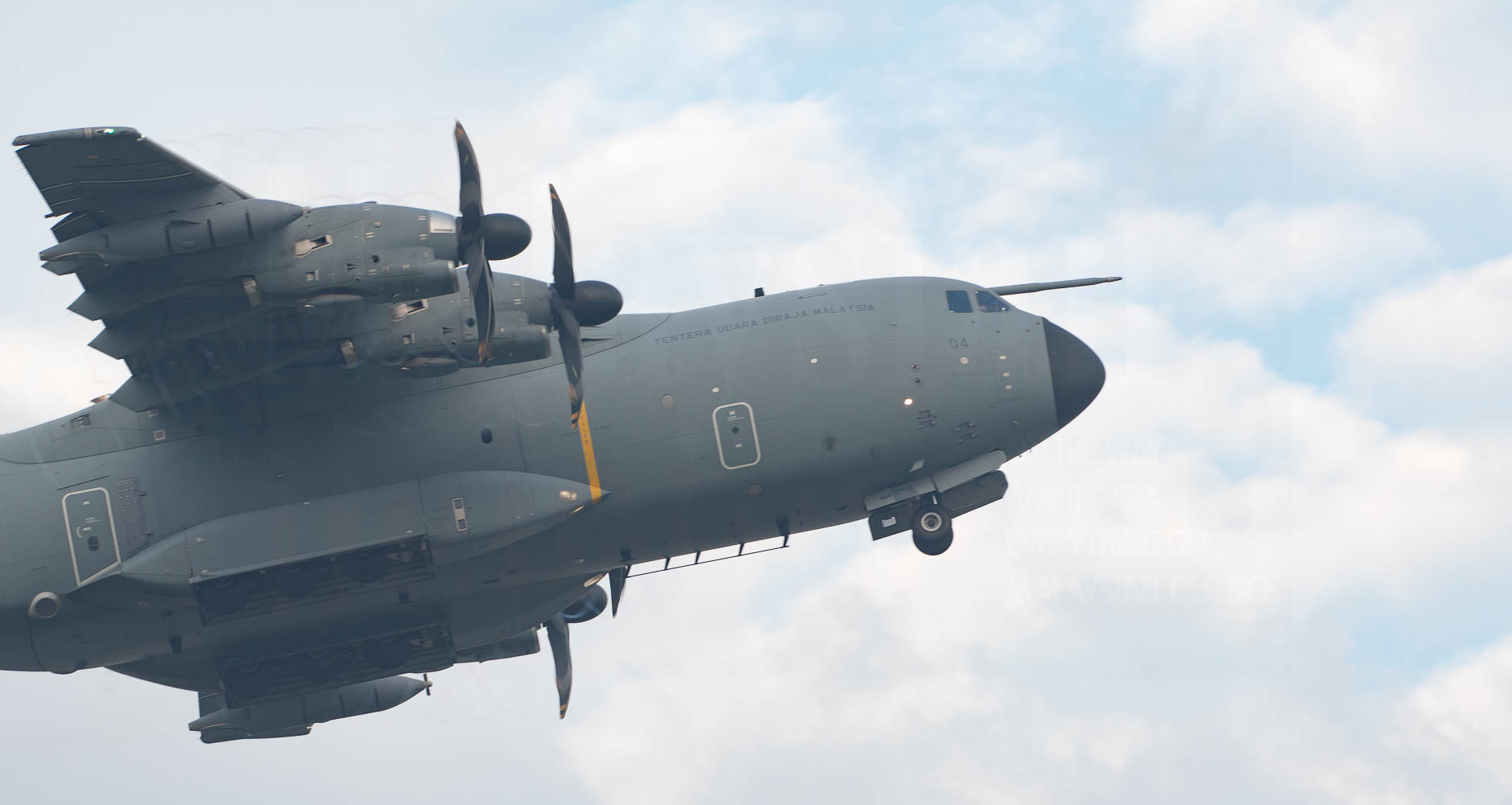
SHAH ALAM: Standing in the eyes. It appears that RMAF is the world leader in using the Airbus A400M airlifter so much so that the company has awarded an award to the service. RMAF chief General Ackbal Abdul Samad accepted the Fleet Leadership Award on behalf of the service at the Singapore Airshow 2020 today.
From Airbus
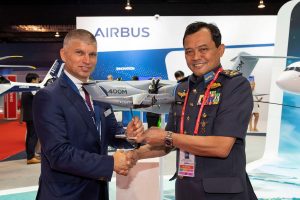
The Royal Malaysian Air Force (RMAF) has received a Fleet Leadership Award from Airbus in recognition of its record-setting utilisation rates for the A400M.
For 2019, three of RMAF’s A400Ms recorded the highest number of flight hours, with one aircraft surpassing 2,000 flight hours, and another two aircraft recording nearly 1,900 flight hours. This makes the RMAF the global fleet leader for the A400M for the second year in a row.
Between August and September 2019, RMAF also achieved 100% fleet availability with the A400M over 40 consecutive days.
In recognition of RMAF’s outstanding achievement, Airbus Defence and Space, represented by Bernhard Brenner, Executive Vice President Marketing and Sales, presented a token of appreciation to RMAF’s Chief of Air Force, General Dato’ Sri Ackbal bin Hj Abdul Samad, at the Singapore Airshow today.
The delivery of RMAF’s first A400M took place in March 2015, with the second and third aircraft arriving in December 2015 and June 2016, respectively. RMAF’s fourth and final A400M was delivered in March 2017.
The A400M is the most advanced, proven and certified airlifter available, combining state-of-the-art technologies to fulfil the current and upcoming armed forces’ needs. The A400M combines the capability to carry strategic loads and support humanitarian and disaster relief missions, with the ability to deliver even into tactical locations that have small and unprepared airstrips, as well as to serve as a frontline-tanker. The RMAF has proven the A400M’s capabilities on-the-field with many missions performed over the recent years.
Malaysia is Airbus’ first export customer for the A400M. Other operators of the A400M include the German Air Force, French Air Force, Spanish Air Force, Royal Air Force (UK) and Turkish Air Force. Belgium and Luxembourg will receive their first aircraft later this year.
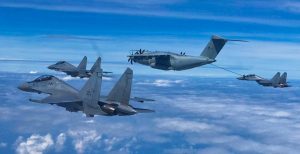
— Malaysian Defence


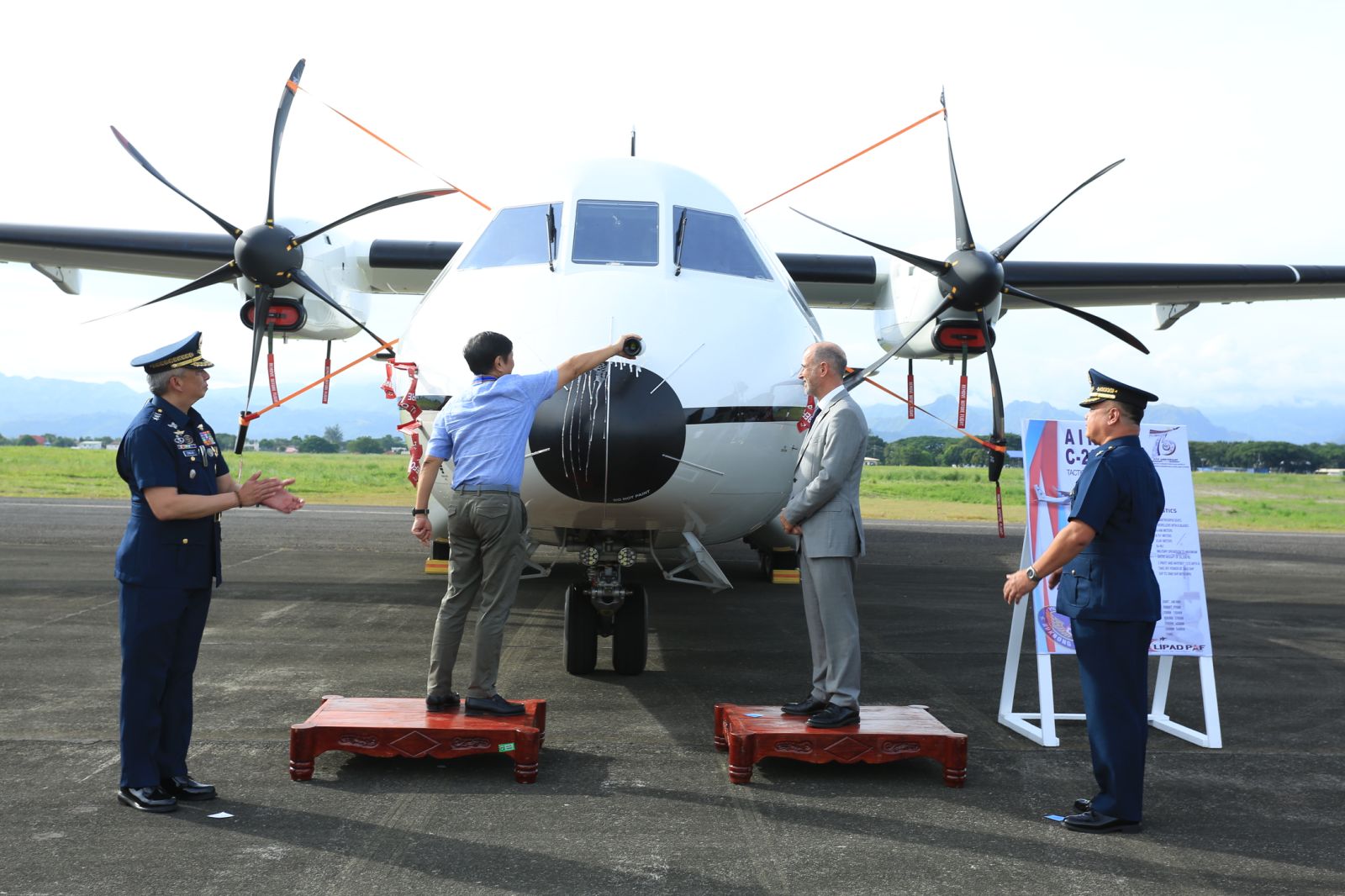
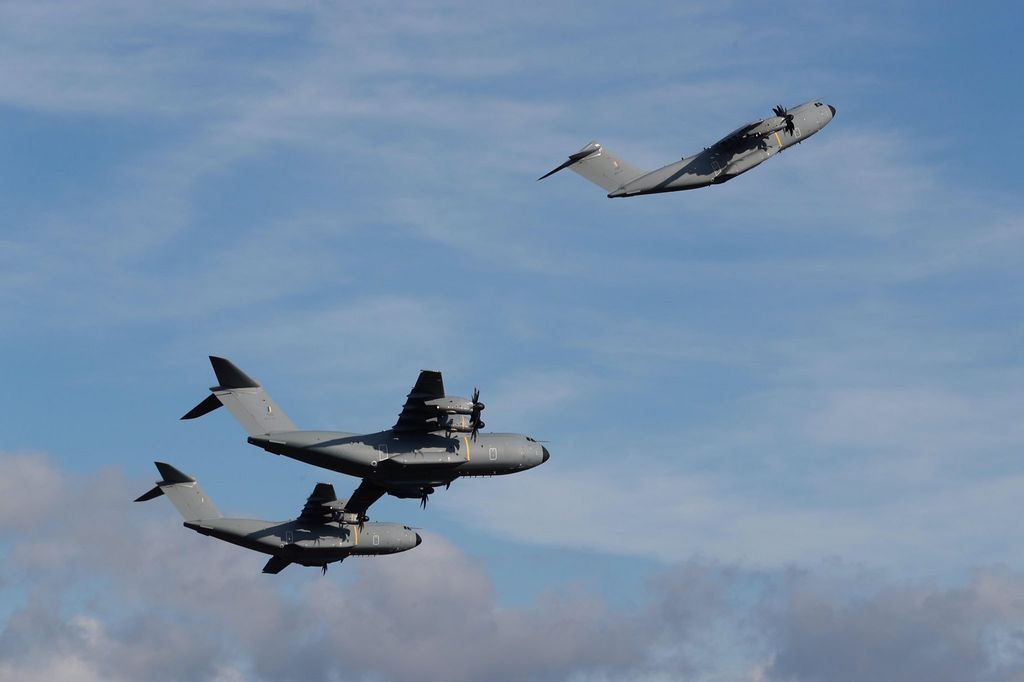
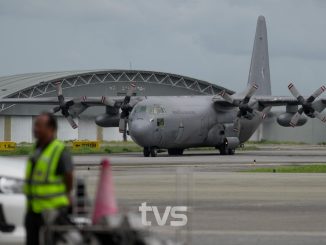
Well done RMAF!
Outstanding achievement indeed, not to mention the proper hangar
and supporting elements.
To be the fleet leader of the A400M world with only 4 airframes is exceptional. Other air forces like UK, France, Germany, Spain and Turkey has at least twice that number. A military transporter flying 2,000 hours annually is a lot. That said if it has flown that much, the OPEX for that is available and those birds are not spending most of its time on the ground.
I hope that in RMK13 (2026-2030), we would have the budget to get 2 more A-400M from excess Spanish or Germany allocation at lower than list prices. A fleet of 6 would be easier for the airforce to have 4 available for 10 PARA deployments.
Goes to show those naysayers that claimed our A400s will be white elephants and hangar queens, knows nothing.
I don’t see why do we need additional A400M when we have 14 hercs and 5 CN235.(even assuming 2 are released for full time MPA duties). That’s not to mention 2,3 white tailed Hercs in Airod hangar. Especially when there are other more pressing needs like more hornets and AEW
Just asking..is there posible for this four program to be signed the contract within this year before RMK-12?
1)Maritime helicopter for TLDM
2)HMPV for UN contigent
3)SOV and ROV for GGK
4)24 carrier vehicle for ATGM or AGL
Reply
Yes
@ alex
We can have additional A400M and hornets + AWACS + airbone jammers etc etc
6 A400Ms would give 3-4 units available to transport 1 uparmed Leading Parachute Battle Group into a conflict zone.
https://www.malaysiandefence.com/another-view-on-tudm-cap-55/
(I need to write a take 2 post DWP on this)
Yay!
http://pbs.twimg.com/media/EQkZDhMUcAAsEwS.jpg
Su-30MKM to pitch black 2020!
1x F/A-18D to be serviced by australia? What is this all about actually? IMO rather than wait for kuwaiti hornets, we could get additional aussie legacy hornets now. Fly them like we stole them, and retire them around 2030. While at it, ask nicely for S-70-a9 blackhawks for PUTD too.
Alex,
There is indeed no pressing need to
add additional transports in the near term as the Charlies – despite their age – still have lots of hours remaining and of course there are 4 A400Ms and 6 CNs – not as if we operate at a high operational tempo and have commitments all around the world.
People tend to focus on the merits of the A400M which is undeniable but for me; what happens if we require small loads (i.e. a single pallet) to be lifted? Would it justify using a A400M or even a Charlie. What happens if the bulk of operational sorties don’t require the cargo space required by a A400M? Taking into account the operating costs and practicalities involved; is this a trade off we’re willing or able to make in the long term?
Sure the RMAF finds the capabilities offered by the A400M useful (the irony of course is that decision was a political one and the RMAF, which has other priorities in the form of radars, MPAs and helicopters, had no say); in terms of avionics, support systems and architecture it’s the most ”modern”/technologically advanced airframe we operate.
From a operational perspective (never mind personal opinions or preferences); do we need additional ones in the near term? For me the answer is no as we have pressing long overdue requirements in other areas.
It remains to be seen what future direction the RMAF intends to take with its Charlies. We know it wants to do away with the CNs for the tactical transport role but what do we intend to eventually replace the Charlies with? Do we intend to maintain the numbers or (to use a cliche) do more with less in the future?
@… @alex
Good call on the additional A400s although we already have an established transport fleet as mentioned.
Focus, effort, finance priority should be the LCAs/FLIT. Half of MPA program is also on it’s way.
Hornets yes, as … mentioned as interim solution until our Gen5 purchase post 2030s. Heli fleet for RMN too..
2000 hours annually is too much. In a average RMAF fly A400M 5.5 hours daily!!
Where were they going and how many tons package on board?
What about charlie and CN? How many flying hours anuually?
I think RMAF love to take A400M anywhere rather than using charlie and CN.
@ azlan
IMO probably the reason why our A400M is flying so much is probably because most of the budget to maintain the C-130H fleet is not there. No idea right now how many of our C-130H are actually in operational condition, and how many are in overhaul or pending for one. Not to mention upgrades for the C-130H, such as the glass cockpit is still not yet approved. From open sources the flying cost per hour of C-130H and A400M are quite similar, if maintenance needs and upgrades of the older C-130H is taken into account.
Yes in the near term we dont need additional A400M. I am looking at RMK13 2026-2030 timeframe for the additional 2.
For small loads, MEDEVAC, MECU, I am looking at the PC-24 also during RMK13. PUTD could also be given planes like the PC-6 or Sikorsky PZL M28, for their own organic airlift capability.
As for the C-130H replacement. Probably the best Herc replacement is another Herc. Timeline? Probably around 2040.
https://www.malaysiandefence.com/another-view-on-tudm-cap-55/#comment-351477
“1 x F/A-18D to be serviced by australia?” @… I think TUDM planning for a program named “Maintenance Interval No.1” for the Hornets, the airbase is home for two squadrons of RAAF Hornets.
The 2,000 hours includes training and operational
sorties; as well as post maintenance test flights.
@ nimitz
I dont see any technical need for the hornets to actually be serviced in australia. Unless australia is offering to do it for free.
@ azlan
2,000 hours for 1 airframe in a year is a lot for a military aircraft. With another 2 airframe flying more than 1,900 hours. NATO A400M fleet for example, only flown an average of 650 hours per airframe in 2019.
@Azlan
If the Armed Forces needs to move such small loads, and there isn’t any urgency, they would rather use MasKargo to any civilian airports nearest to its destination.
Ironically, if TUDM didn’t think A400s were necessary, then why fly them so much whatmore this will eat up much of their OPEX budget? Probably back then, TUDM didn’t se the need but the capabilities of the A400M created that need, much like how the market didn’t see the need for iphone when it debuted but by virtue of its capabilities, it created a new need for it.
Reply
In 2008 until 2013 we did not plan to fly soldiers and equipment out to Tawau on a regular basis but then came the Lahad Datu incident. Due to the urgent need to send troops and equipment there due to the incident they charted AA to fly out the troops while the Hercules were used to haul cargo. Now with the A400M available of course the RMAF has to use them. Furthermore since they no longer has a standing contract for AA courtesy of PLKN, if and when they want to use civil aircraft they need to carry out a tender which takes too much time for military purposes so they used the A400Ms and the Hercules as well. Do note that for small detachments to Sabah, soldiers in uniform can still go to KLIA2 and checked in for the next available flights. Since this are regular flights they cannot carry any weapons
…. – “2,000 hours for 1 airframe in a year is a lot for a military aircraft””
Which I why I mentioned that the total includes “training and operational sorties; as well as post maintenance test flights”.
There is no chance of the total including just operational taskings; even then 2,000 hours is a lot. Another reason why we’ve accumulated ‘x’ hours is because we have just 4; as opposed to other operators which have larger numbers and whose hours are more evenly spread out over larger fleet.
The key difference between the A400M and the C-130s (just like our current fighters and 5th gen ones) is that the A400Ms require a lot more ground test/ equipment to maintain all the avionics/systems/computes onboard. It also necessitates the need for extremely skilled and well trained support personnel to operate and maintain the systems; to a higher level needed for older gen transports which have a much smaller level of automation and electronics
@Marhalim
“if and when they want to use civil aircraft they need to carry out a tender which takes too much time”
There is difference on moving small loads and chartering a whole plane. Of course bar weapons, any items that needs efficient and cheap transportation, the Armed Forces could do with commercial freight services. Heck even Lazada delivers goods to Army bases!
Of course chartering a plane for a special purpose will have to go thru the supply chain bureaucracy and it will take time. This is to be expected but sometimes this is the only choice as with the chartered AA flights out of Wuhan.
off topic
Today is the day that Lt. Adnan Saidi sacrificed his life to defend his tanah air from the japanese invasion.
May we have the same spirit and dedication as Lt. Adnan to defend our tanah air from future threats.
http://pbs.twimg.com/media/EANav8kVAAIc7uL.jpg
http://scontent-xsp1-1.xx.fbcdn.net/v/t1.0-9/s960x960/51851215_1249258845239738_4454712213663383552_o.jpg?_nc_cat=100&_nc_oc=AQlLcP4qshuOcdHq52cK1jZ21i5fvN7cwscTdOt5pUMSzRqXWumErqo3mlFCFyn0Hrk&_nc_ht=scontent-xsp1-1.xx&_nc_tp=7&oh=a1e233c764fd0c485d922f0c7272c14e&oe=5EFDE78A
Off topic
Indonesia PT DI now has CN235 gunship. RMAF maybe should look at it. It could very useful for ESSCOM. After 2 CN235 are modified to MPA, maybe 2 others CN235 modified to gunship.
Romeo,
I would think that the main challenge faced by ESSCOM is detecting intruders on time and intercepting them before they’ve done what they aimed to do and managed to head back into Filipino waters; rather than the lack of a strike asset. Another problem are the ROEs in place which do not necessarily allow us to engage targets once we’ve positively identified them (the ROE will have to be amended if we ever get armed UASs).
By right all the CNs would be converted for the MPA told; including the VIP one owned by the PM’s Department.
Another RMK will be gone soon..it rather…..for RMAF especially.i do hope for some miracle now for our already ‘small’ airforce to become somewhat reborn or atleast rejuvenate during next RMK..still i dont even have high hope for that too
@ romeo
I was fascinated by gunships when i was like 12 years old. Skipping school breakfasts to save money to buy cheap back issue takeoff magazines.
There was a topic in the mags on the history of gunships, starting from the AC-47, to the AC-119 and AC-130A. There was also a navy gunship in vietnam, the AP-2H neptune. It was a time when precision weapons are very far in the future. Their main purpose was actually to hunt for trucks in the ho chi minh trail, in addition to close air support.
For esscom, i don’t see a need for dedicated fixed wing gunships. Those CN-235 are better off converted to MPAs, with secondary overland ISTAR functions.
For fire support, if we do get blackhawk helicopters, it is a potent platform to carry guns and rockets.
http://assets.verticalmag.com/wp-content/uploads/2018/11/Armed_Black_Hawk_1783.v2.jpg
We could also use our PC-7 and PC-7 MkII as a CAS aircraft
http://pbs.twimg.com/media/D54JBtuXkAATQ2G.jpg
“…cheap back issue takeoff magazines.” Yeah,rm7/issue,glossy paper,detailed illustration and top notch photos. Agreed,takeoff really explain airborne gunship evolution from Spooky up to the Ac130a. That was the time our MYR can get that kind of magazine below Rm10. Now…near impossible.
On RMAF hornet maintenance by RAAF, speculation on my part after reading what was there in RAAF Williamstown,hopefully it focus on airframe and minor structural works.
Reply
As for the Hornet service, wait for it…
…..
Indonesia at one point had C-47s configured as gunships; used in the East Timor invasion. In the 1st Gulf war a gunship loitered in the area after dawn had broke and was brought down by a Iraqi MANPADs; highlighting the vulnerabilities of gunships when operating in daylight.
The issue with gunships and ESSCOM is they have to be at the right place at the right time (even if ROEs amended); hard to achieve with just 1 or 2 platforms. There are always assets at sea sufficiently armed to deal with the types of threats encountered but there won’t always be a gunship in the air when its needed.
Unless we are suddenly faced with a protracted insurgency or a non state threat different to what’s faced in Eastern Saba; I don’t see the need for a dedicated close support aircraft in the form of a single engine turboprop (the TNI-AU has Tucanos in the Tarakan area across the border from Tawau) or even a converted transport.
Out of topic question.
Whats the latest decision regarding the MD Little Birds n the M109 please
Yeah iwanna know too..paladin looks like almost certainly cancelled md530g hmmm..need to mr marhalim answer it himself
If the army needs a SPH on the cheap Serbian Nora is available. For usd500k ea. it’s plenty of bang for bucks; autoloader, protected compartments for crew, 52 caliber gun, our long history of doing business with yugoimport meant that we could ask them to accept trade in and offset deals as part of the payment, etc.
It wouldn’t gonna break the bank. I reckon we only need about usd20-30 million to raise 2 regiments worth. Certainly cheaper than Caesar
Alex – “yugoimport meant that we could ask them to accept trade in and offset deals as part of the payment, etc””
Just because we have a long history we them doesn’t mean they’ll readily accept palm oil. Depends on whether it’s in their interests to do do, i.e. can they find a buyer for the palm oil, is there a domestic need, how much palm oil are they willing to accept in lieu of cash, etc. Note that the countries willing to accept palm oil as part payment have a huge domestic demand for it.
I’m sure Nora is a great gun but we can’t buy something merely because it’s cheap. We have to do a sound technical evaluation and look at long term factors. We also need to compare it to other guns we’re looking at and factor in long term support, barrel life, etc. It’s also not only the gun but also the ammo we get and the fire control. Without effective fire control we can’t deliver timely precision fire.
@Alex
Serbia is on the verge of joining EU and EU has a standing ban on palm oil. No way Serbia will jeorpardise their chance of joining EU just for a one time deal with us.
I think we should research on ways to increase domestic consumption of palm oil as not to depend too much on foreign trade. EU decision is politically driven, and as we are quite dependent on (after China and India) on them on palm oil exports they are able to dictate the terms to us, just like what India did.
Actually if we can somehow get our ships’ engines to run on palm oil (full palm oil, not the biodiesel variety) we may somehow reduce operating costs, and dependence on hydrocarbon-based fuel on general.
ASM
Research on this has been ongoing for quite a long time now. In the 1990’s trials were also conducted here using cars powered by recycled cooking oil.
If the days ever comes when palm oil can be used to effectively power cars, planes and ships; countries would pay billions for the technology, oil companies would pay billions for the technology not the be made available and every country that could would be in a mad rush to grow palm oil as all the palm oil in the world would be insufficient to meet demands.
@ azlan
As it is right now, the current crude oil prices are somewhere around half the price of palm oil. There is actually no commercial reasons to actually use palm oil as fuel, unless you have artificial reasons such as high taxes on petrol and diesel.
The technology is there. many tank engines are designed as multifuel capable, it can run just on any liquid that can burn. If there is no political push, there is actually no need to blend palm oil with diesel, as it actually increases the cost of fuel. Every day, plenty of new oilfields are discovered all around the world, a far cry than in the 70s and 80s prediction that we would run out of oil in 2000s.
….
Turbine engines (i.e. ones on the M-1 and T-80) run ion a variety of fuel but I don’t think they can run on refined palm oil. As for mixing palm oil with diesel I have no itdea if it’s even been tried as a possibility.
New sources of oil are indeed being discovered but the problem is that in a lot of places the costs to extract the oil is astronomical; especially if offshore.
My problem with Nora is that 500k is likely a basic, 152mm version (like the ones used by Burma and Bangladesh) A new generation one firing 155mm munition is likely going to cost more. Also, unlike Caesar, it hasn’t been under extensive trials by the army. Besides, as trivial as it sounds, Caesar (the ones with 6*6 truck chassis at least) is air transportable, either by C-130 or A400. The same cannot be said to Nora
We’re practically turning away free SPH so it’s likely not about money. Anyway we’re going to learn more about SPH acquisition this year so let’s wait and see. If we’re looking for commonality with our existing gun the Denel T5-52 is a good alternative, provided it’s also being trialed under the same circumstances as Caesar
@ASM
Palm oil is a commercial commodity. If we were to use it entirely by ourselves, it wouldn\’t be worth much commercial value if we don\’t export it. Not unless we found a new way of using palm oil that would make the world want to use it too.
@ Azlan
On palm oil-diesel blend, we have done it for nearly a decade now.
FYI in Malaysia, palm oil biodiesel was initiated in 2011 with the B5 programme (5% palm oil mix), before this was increased to the B7 blend from November 2014. Starting febuary 2019 it was increased to B10 blend, which is the standard now.
http://paultan.org/2018/12/11/pm-launches-b10-biodiesel-programme-to-reduce-co2-by-10-boost-demand-for-local-palm-oil/
As for the price of crude oil, even if the price doubles, it is still just reach parity with the current palm oil prices.
Yeah i second that denel t5-52 because we’ve already use denel turret widely for our gempita..but if we cant get them..maybe turks yavuz or maybe that yavuz pricier than t5 52..the ultimate dream sph is always archer especially with that new configuration
Dundun – “We’re practically turning away free SPH so it’s likely not about money”
Actually it might be. If the army has long term concerns about the M-109s with regards to being supportable and other issues then it boils down to cash. We can’t simply assume that just because others went down the uses M-109 route without any apparent hassles; that it will be the same for us. Different armies have different concerns and different levels of resources.
My guess is that the decision from the start was politically driven and that the army was forced to go along with it; despite having a clear preference for a motorised option and the advantages that comes with line with our operational requirements.
At the end of the day just like the issue with MRCAs and it grunge the systems rather than the actual platform that makes the difference; same applies with arty. It matters not whether we get brand new M777s, Caesar or even pre owned D-30s; if we don’t also make the required changes in doctrine and organisation ; as well as the needed fire control abd ISR ability to conduct precision fire.
@ dundun
All NORA B-52 systems use 155mm barrels, including bangladesh and myanmar. Bangladesh Nora B-52 has the same sagem sigma 30 INS system as the PT-91M and Caesar. Advantage of Nora B-52 compared to Caesar 6×6 version is that it has a fully automatic loader with 12 ready rounds and 12 ready charges. A reason why it is heavier than Caesar. Caesar 6×6 has a semi-auto loader, as is the chinese Norinco SH15 155mm SPH.
If going for commonality, most of chinese 155mm howitzer components (except the latest AH4 lightweight howitzer) are based on gerald bull howitzer design, as is our Denel G5s.
@ azlan
Yes I agree that we need to practice more on the dynamic firing activities (firing on the move), to recapitalize our counter artillery radar capability, and to stand up our organic artillery regiment UAV capability.
P.S.
Bull did quite a bit of work for China before his death. He also invented the base bleed round; a canister of gas fixed to the base of the shell. It released gas to fill up the vacuum in the wake of the shell; eliminating drag and also increasing range.
…..
In my opinion; 2 very interesting books on the subject to read are :
Arms and the Man: Dr. Gerald Bull, Iraq and the Supergun (William Lowther)
Steel Wind: Colonel Georg Bruchmuller and the Birth of Modern Artillery (David T. Zabecki)
The first is hard to get now but the 2nd (on an artillery genius) is easy.
Azlan, thanks on the heads up for the 2 books.
anyway another interesting read on gerald bull
http://www.washingtonpost.com/archive/opinions/1991/02/10/the-guns-of-saddam/e31bbb3a-52c3-4f29-bc47-cca57a80b6db/
On paper the Iraqis has an impressive artillery capability; including guns which outranged anything the Yanks had. In reality Iraqi artillery has zero target acquisition capability apart from FOs, has poor fire control and only the ability to hit pre registered targets.
Closer to home the Thais has a rude shock when their arty was outranged by Laotians 130mms during the 1987 border clash. 155mm sub munitions were used against the Cambodians a few years ago. That means the Thais (like us) have not signed the Oslo Treaty. Our ASTROSs have sub munition rounds.
.
Not a bad idea we bought our 155mm guns from South Africa. So Chinese guns should not be bad too
If we want cheap wheeled SPH, we can look for the G6s under storage by SANDF or seek donated units from UAE stocks. Cheap as its 2nd hand, 6×6 wheeled, battle proven, mine resistant, commonality with our existing G5 arty.
But i understand g6 is kinda heavy though..will surely impact mobility n g6 is considered old platform
Lee – “So Chinese guns should not be bad too””
In the 1980’s Bull performed work for China. Some of the stuff used on the G-6 was incorporated on Chinese designs. But that was then. Until we have solid info we really can’t say for certain whether Chinese guns are really as good – technically and qualitatively – as far as build quality, barrel life, accuracy, etc. Personally I have no doubts the Chinese can produce great arty.
But ultimately it doesn’t matter; if one has better fire control, better ISR and better ammo; one can get a better performance in terms of accuracy/precision with 35 year old D-30s compared to a shiny brand new M-777.
The G-5 and Rooikat were designed with SADF requirements in mind; the need to move long distances over largely flat terrain and the need to have a certain level of range.
The army’s preference is for a motorised platform which amongst other things can be flown. The G-6 doesn’t fall into this category; precisely why we’ve never looked at it and why it was never brought here here for trials. The Rooikat was trialed here but we ruled it out; as we did with Centauro.
@Firdaus
I never can figure out the need for high mobility on 155mm SPH arties much less airlifting to an operational theater. At best, it should have the same mobility as our MBTs and IFVs, and AFAIK G6 still fits this requirement. Surely we don’t look to airlift our MBTs no?
If it comes cheap enough, we can even stand up an arty battalion in East Malaysia. That would be sufficient for an initial response until we sealift our other heavy hitters via MRSS(when that comes).
@ joe
There is only about 40 units in the South African inventory. While UAE G6 is their main SPH and heavily used in Yemen. There are no indications that UAE is replacing them in the near future. Oman has 24 and that is also their main SPH.
G6 in yemen
http://pbs.twimg.com/media/CqKcShxWIAAeMkW.jpg
Yes the G6 are great, but i dont see anyone going to sell theirs for cheap to Malaysia.
Firdaus – “surely impact mobility”
Depends on where it’s operated – along a paved road network or in a palm estate?
Armies which have a requirement for a SPH to keep up with manoeuvre elements tend to be ones operating over large open areas in a high intensity scenario. The idea being that a tracked platform was needed to go where fast moving MBTs and IFVs had to go and also the ability to keep pace with them in order to provide indirect fire support. This was beyond the ability of towed artillery which although may have had the range needed; could not keep pace with fast moving combat elements due to mobility levels.
In our context I’m of the opinion that our requirements doesn’t necessarily call for a tracked SPH to keep up with tracked manoeuvre elements in order to do its job; e.g. manoeuvre units in combat in a palm oil estate can still be supported by tracked arty located kilometres away on the periphery or fringes of the estate; where there are dirt roads. If those dirt roads can accommodate a large lorry they can do the same with a SPH.
I have never been one to get excited when marketing literature mentions something capable of being “air flown” as it’s wholly dependent on having the needed airlift and it will take several sorties just to lift a single battery; plus crew, ammo and other equipment but ultimately such a capability is still useful to have. In our context the need or preference for certain things to be air lifted was traditionally due to the need to rapidly deploy stuff to East Malaysia. In the future as we build up our capability there; there will be less of a need for certain things to be rapidly flown there.
@…
SANDF ones are primarily in storage conditions and don’t seem like they would be put to use anytime unless SA goes to war which today is highly unlikely. They might be willing to sell if they are not using them. Or else, yeah UAE ones are actively used but they have over 70 pieces and not all are in use currently. Once the war in Yemen blows over, we could ask if they might donate some.
Reply
Even if the UAE has a few G6s to spare, I don’t think they will do so due to the current situation with our relationship with the Gulf countries. Even when we were buddies with them, Najib time, they only made promises, donating arms, which were never fulfilled
Marhalim,
Spot on. Even putting aside the fact that G-6s clearly do not meet our requirements; the current state of the bilateral relationship is such that a transfer of used equipment has no chance of occurring. The current leadership here has a lot of things on their plate and repairing the relationship with the mega rich Gulf Arabs doesn’t seem to be a priority; despite our long history of going out of our way to ingratiate ourselves with them.
@ joe
This is the current political situation.
We are politically close to turkey, qatar and pakistan. UAE are not friends with turkey and qatar. UAE has no strategic importance in SEA political scenario. So no reason why UAE is going to donate anything to malaysia.
@…
Well during DS Najib era we were much closer to Saudi (who is pulling the strings in Middle East). Even our hopeful Kuwaiti Hornets purchase will be dependent on Saudi giving the nod (and perhaps subsidies). Under DrM our political alliance have changed much, in no part due to his personal strained relationship with Saudi rulers. My suggestion is really looking past his premiership actually, and a certain someone is much closer to the Arabs than DrM ever had been.
Reply
Actually the other guy, you know who is, is close to Turkey though that said he is also likely to be more friendly with the Gulf States
But it seems to me that we will not any additional howitzers anytime soon at least after that LG1 (that too still waiting to arrive)..Be it the towed, track or truck mounted.Yeah sure we do not need to get what other countries get..But that only valid if we get something and not nothing at all..
“We are politically close to turkey..”So is it viable for us if we let say get firtina or yavuz from the turks..and in future korkut, hisar defense system and many more system from turkey..
Marhalim,
The “other guy” many years ago spoke of an assassination plot and fled to the Turk embassy. Remember that?
Reply
Yes
The army already tested K2 before and decided against it so why the hell do we need Firtina?
Dundun,
Good point. What advantages would there be in buying Firtina rather than going direct to the Koreans for the K2? There is no certainty that buying Turkish will be cheaper than buying Korean and the Koreans will probably be able to offer a better oddest deal.
At the end of the day the army’s preference is for a cheaper to buy and maintain and easier to deploy wheeled SPH. Unless it really has no choice or a decision is made politically; it will not go for a tracked platform. Not only is a wheeled platform cheaper to buy and maintain but it also offers certain advantages in line with our operational requirements.